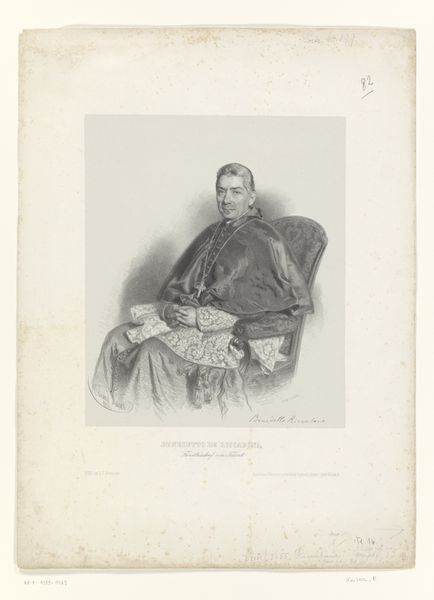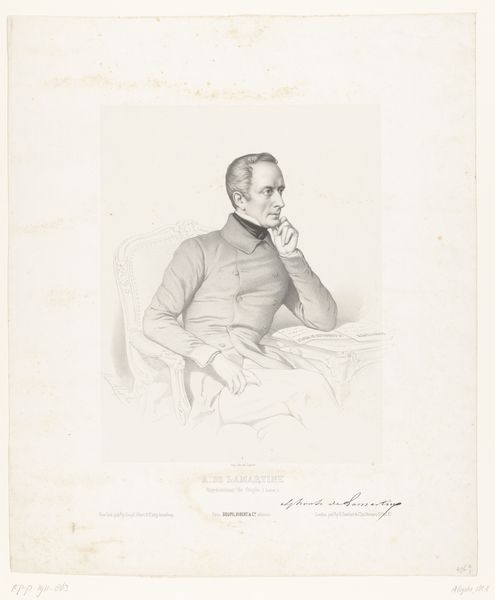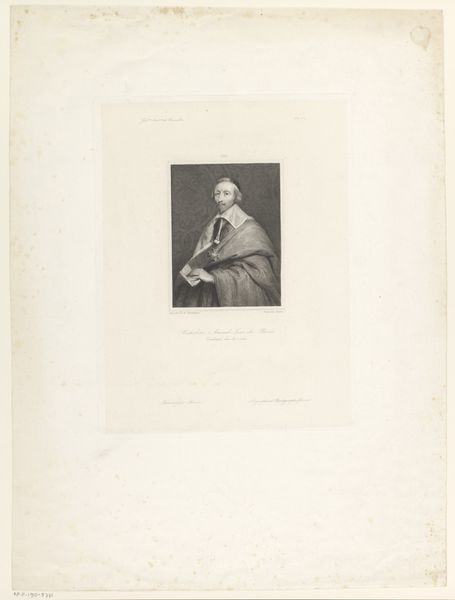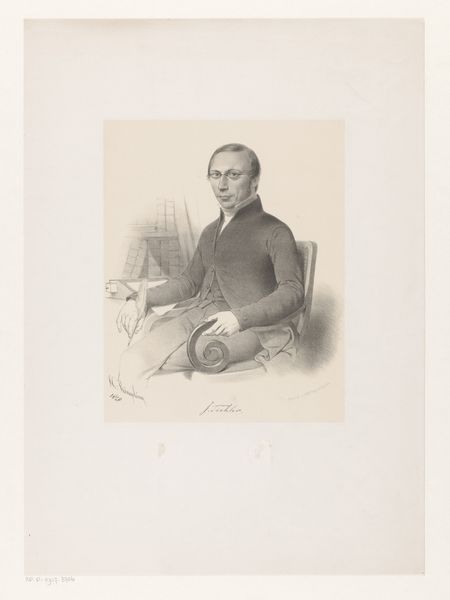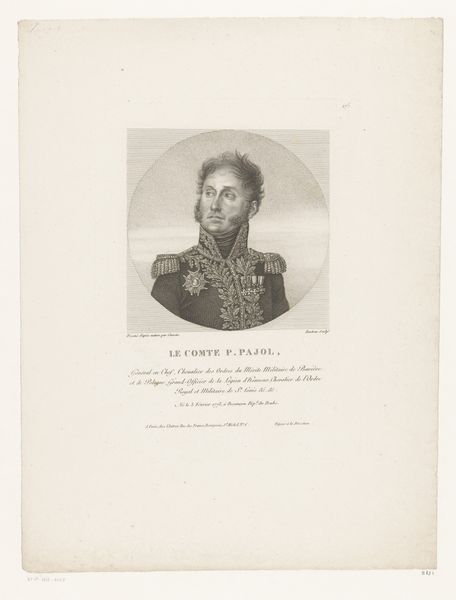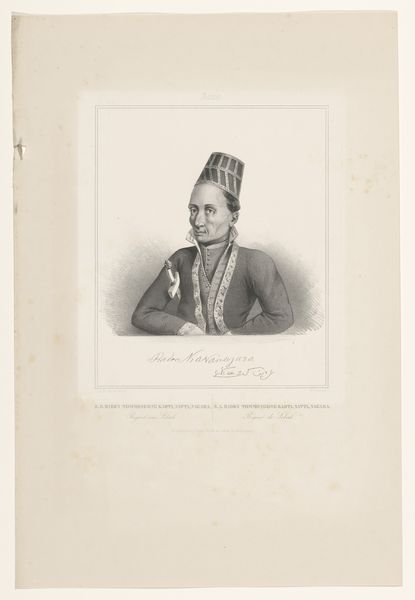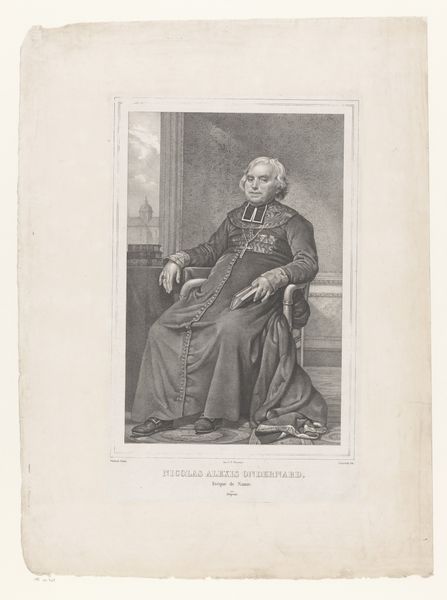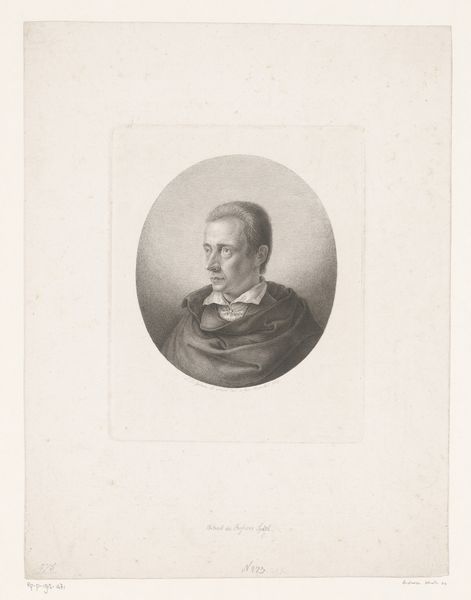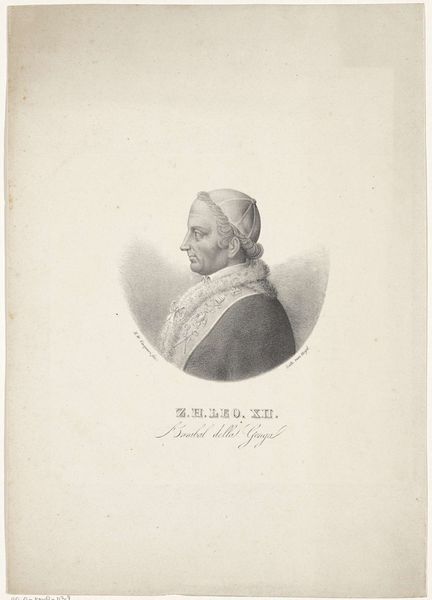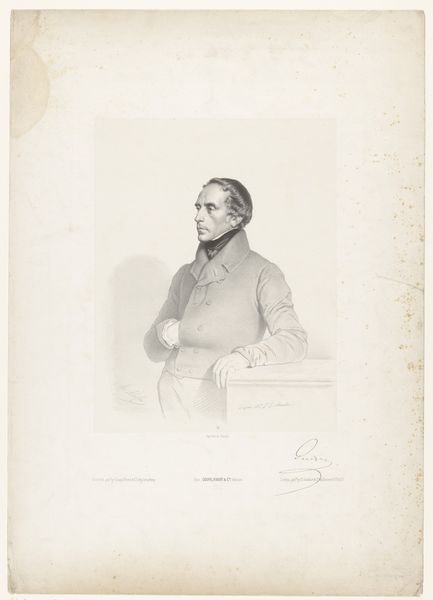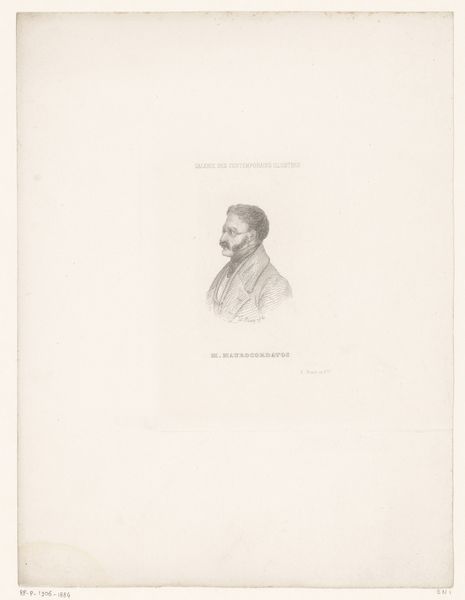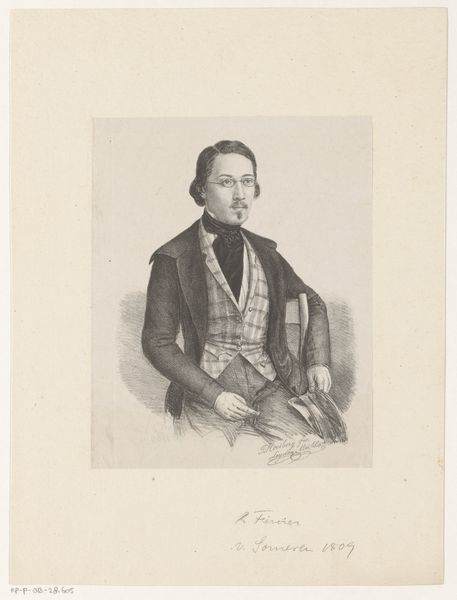
drawing
#
portrait
#
drawing
#
academic-art
#
realism
Dimensions: height 613 mm, width 454 mm
Copyright: Rijks Museum: Open Domain
Curator: Eduard Kaiser rendered this drawing of Giuseppe Luigi Trevisanato, Archbishop of Udine, in 1856. It's a remarkably detailed portrait, isn’t it? Editor: It is! At first glance, the subtle gradations of light and shadow give it an almost photographic quality. The lines create depth and volume quite nicely. Curator: Indeed. Consider the context—Italy in the mid-19th century, deeply enmeshed in the Risorgimento. Portraits of powerful church figures like Trevisanato served to reinforce their authority but also, potentially, documented their complex relationship with a changing social order. Editor: I'm immediately drawn to the textural contrast—the smooth planes of his face against the intricate folds of his robes, then against the rectilinear aspect of the book in his hand. Kaiser expertly navigates the formal challenge of creating a visually interesting image within a relatively monochrome palette. Curator: Precisely. The meticulous rendering underscores the status and dignity associated with his office, though the portrait also carries a certain weightiness, don't you think? Almost a premonition. Remember, the papacy's temporal power was in sharp decline during Trevisanato’s tenure. Editor: There’s certainly a stoicism etched on his face. Note how Kaiser directs our gaze via the play of light—primarily onto Trevisanato's face and hands, suggesting perhaps that intellect and faith were most important. The ornamentation, while detailed, feels secondary. Curator: Yes, and portraits of the clergy, particularly at this echelon, were always steeped in political significance. They walked a tightrope between religious duty and civic engagement, made all the more precarious by nationalist sentiments and calls for unification. Trevisanato’s own stance likely varied depending on the shifting landscape of Italian politics. Editor: What remains so striking is the artist’s ability to give this portrait depth, almost beyond the social commentary. It transcends a mere representation of power—hinting at internal contemplation. Curator: I agree. Perhaps Kaiser succeeded in revealing some of Trevisanato’s humanity amidst the trappings of authority. Editor: Ultimately, the drawing's technical virtuosity lies in its ability to allow such dual readings—formal excellence married with historical depth.
Comments
No comments
Be the first to comment and join the conversation on the ultimate creative platform.
